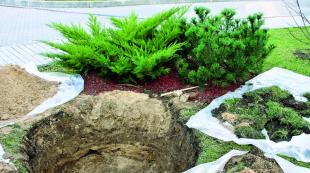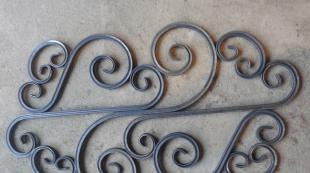How to replace the filter in a vacuum cleaner inside. Do-it-yourself filter for a vacuum cleaner: features of manufacturing a cyclone and a high-performance aqua filter
Vacuum cleaners with dust bags in the form of a bag are losing their popularity. Devices with a water aqua filter and a cyclone are in demand, but there is one drawback here. Small containers are not able to accommodate a lot of debris that appears during repair work. A do-it-yourself filter for a vacuum cleaner assembled from improvised materials completely solves the problem.
Two options for assembling a cyclone
Most woodworking and cutting power tools are equipped with a nozzle for connecting to a vacuum cleaner. A convenient function eliminates the accumulation of dust in the apartment, but when performing large amounts of work, you often have to clean the filter. A home-made high-capacity cyclone will help increase productivity, which can be assembled in two versions.
Cyclone from PET barrel
A homemade high capacity cyclone is ideal for a home woodworking workshop. In the manufacture of the filter housing, a PET barrel with a lid was used. The capacity depends on the power of the vacuum cleaner. For a low-power unit, it is undesirable to take a barrel with a capacity of more than 5 liters.
Step-by-step manufacturing of a cyclone includes the following steps:
With inside steel strip barrel lids secure a car filter holder. The design resembles a pyramid of three petals connected at the top with a hairpin. A hole is cut in the center of the cover for connecting a vacuum cleaner hose.

The car filter is mounted on the holder. A wide washer is put on the stud protruding in the center and the nut is firmly tightened. The filter must be pressed tightly against the lid, otherwise the dust from the barrel will penetrate through the nozzle into the vacuum cleaner.

A piece is fixed in the opening of the lid plastic pipe. Through the outlet pipe, clean air will be drawn in by the vacuum cleaner. There is a factory filter inside the unit. Do not pull it out to increase suction power. The membrane filter will additionally protect the fan from dust.

The car filter needs additional protection. A nylon female stocking is pulled over it from above, protecting it from small dust particles. Additionally, the filter is protected by a galvanized casing. The baffle will prevent damage to the filter element by large solid particles.

To suck up debris in the side wall of the upper part of the barrel, an inlet pipe is cut from a piece of PET pipe. Inside the container, the element is fixed with a clamp. The tube is placed with an inclination towards the bottom and in relation to the side surface of the barrel.

The disadvantage of PET barrels is thin soft walls. During operation of the vacuum cleaner, a vacuum is formed inside the container. To prevent the walls from “playing”, the barrel is reinforced with a steel strip.

A cyclone from a barrel together with a vacuum cleaner represent an overall design. For ease of use, a frame is made of plywood. Four wheels are attached to the bottom.

A filter with a vacuum cleaner is installed on top of the frame. All elements are securely fixed, but provide for easy dismantling.

The hose from the vacuum cleaner is fixed to the nozzle on the filter cover. A corrugated hose is put on the suction pipe of the cyclone. Check the sealing of the joints, otherwise, if there are the slightest gaps, the performance will decrease.

The cyclone test can be carried out on sawdust. After turning on the vacuum cleaner, intensive suction will begin. The sawdust will hit the walls of the barrel and settle to the bottom.

Small traffic cone cyclone
Cyclone from a PET barrel in terms of performance refers to a semi-industrial unit. But what if you need a compact filter for a small amount of work? A neat design will come from a traffic cone.

Cyclone assembly consists of the following steps:
For a dust collector, you will similarly need a PET barrel, but you can take it with a small capacity of 3-5 liters.

With a hacksaw for metal or a grinder, a square stand is cut off from the cone. The workpiece is placed on a sheet of plywood, the inner hole is outlined with a pencil. This will be the lid on the cone.

A hole is cut in the center of the plywood cover, where a piece of plastic pipe is hermetically mounted. The outlet pipe is deepened exactly to the middle of the cone. A short pipe will not allow a swirl to form. Debris will be drawn in through the long pipe.

An inlet pipe is cut into the side wall of the cone. Another circle is cut out of plywood, with a diameter slightly smaller than the barrel lid. A hole is drilled in the center, where the sharp part of the cone is inserted. Another hole is cut in the center of the barrel lid. Saw off the top from the cone. A plywood circle put on the tip of the filter formed a kind of flange connection. The cone is inserted into the hole on the lid of the barrel.

All elements of the cyclone are assembled and the tightness of the connection is checked. The filter with a vacuum cleaner is fixed on a plywood frame. Hoses are connected to the inlet and outlet pipes.

Upon completion of the assembly, a test is carried out. If there is no air leakage at the joints, the debris will be drawn into the PET barrel.

If the farm did not have a road cone, the workpiece can easily be made from galvanized sheet. Joints for tightness are best soldered.
It is easier to use a sewer PET pipe 150 mm thick in the absence of a cone. The lower part of the cone will be replaced by a plastic bottle. The bottom of the container is cut off and thrown away. The top of the bottle with a neck is put on lower part filter. From above, the inlet and outlet pipes are connected using fittings.

A homemade cyclone works on the principle of centrifugal force. A capacious container will allow you to collect a large amount of debris during repair work.
Water filter assembly
Vacuum cleaners with an aquafilter are well suited for allergy sufferers, but not everyone can afford their high cost. Homemade from an aluminum pan and a plastic bottle will come to the rescue.
The assembly of the aquafilter consists of the following steps:
Work begins with the modernization of the vacuum cleaner. The inlet filter of the device is made of thick paper. The insert must be removed, and a piece of foam rubber should be put in its place. Upgrading the inlet filter will help increase suction power.

The bottom is cut out in an aluminum pan so that an edge 3 cm wide remains. Two holes are drilled on the handle and one in the side wall near the bottom. The pan is fixed with screws to the body of the vacuum cleaner.

On a plastic bottle, holes about 10 mm in diameter are cut around the neck. They are necessary for the release of clean air.

The bottle is inserted inside the pan with the neck up. Pour 1.5 liters of water into the container.

An adapter is welded from a metal plate and a piece of tube. The workpiece is fixed with screws to the exhaust of the vacuum cleaner.

A piece of corrugated hose is put on the adapter pipe. The second end is inserted into the bottle through the neck. The hose should sink to the bottom and sink into the water. A slot is made on the side of the corrugation so that the outgoing air creates a whirlpool.

When the vacuum cleaner is turned on, the dirty air flow will pass through the water. Dust particles will settle in the liquid. Clean air will come out of the holes near the neck of the bottle. After severe contamination, the water is changed.
Homemade filters are not aesthetically pleasing appearance, but for cleaning the premises when performing dirty work perfect for renovations.
A long time ago, in a certain apartment in one of the cities of one of the countries of the post-Soviet space, a new vacuum cleaner appeared. And everything was fine with him. He sucked into himself with terrible force the dust and debris of that very apartment, leaving cleanliness and order around ...
After some time, the suction power began to decrease. The reason for this was a dense layer of dust on outer surface HEPA filter. Washing the filter under running water again returned the vacuum cleaner to its former power. In the end, the HEPA filter began to be washed after each cleaning, using thin hard objects (such as a screwdriver or knitting needle) in the washing process to pick out dirt from the filter folds.
But as you know, nothing lasts forever under the moon, and after about 2-3 years of operation, the filter began to look like ... 
Searches on the Internet for a new HEPA filter gave a disappointing result - about $ 25 (it was about 3-5 years ago). This is about a third of the cost of a new similar vacuum cleaner ... But the toad began to tell that the vacuum cleaner itself is still like new, the engine works great and it would be nice to find another way out.
And the way out was found.
Once buying a certain app at the car market. part for the car, I paid attention to automobile filters for air purification. After reviewing the options offered, I settled on a filter from Moskvich 2141 worth about $ 1. 
HEPA filter recovery process:
For work, we need a minimum set of tools and materials. 
With wire cutters, we bite the outer protective mesh of the car filter from both ends and along the middle. Then the mesh is removed from the filter. 
Further sharp knife cut off the paper filter cloth from the end rubber seals. It is necessary to cut along the filter material, in several passes directly at the junction of the filter material and rubber. 
The resulting sheet of filter material is laid out on flat surface. We measure from one longitudinal edge a distance equal to the height of our old filter (the height of the plastic bottom and cover must be subtracted from the total height of the filter). Draw a line with a ruler and cut with scissors. It turns out here is such a preparation. 
Now we need to prepare the remnants of the old filter for reincarnation. Cut off the lid and bottom. 
We mechanically clean them from the adhesive composition with which the filter material was glued. 
Apply new adhesive. Ordinary plumbing silicone is perfect for this case. Holds well enough, hardens in a day, peels off at the next filter change much easier than native glue, sold at every corner. 
Now the most responsible operation.
We fold the beginning and end of the filter material accordion together with a slight overlap. 
We compress the resulting cylinder to the desired diameter and insert it into the bottom of the filter smeared with glue. 
Next, holding the floor filter with one hand, glue the cover on top.
This process is best pre-worked out without glue.
If everything is inserted / stuck evenly, then we put a suitable load on the revived filter and set it to dry for a day.
As a result, we get the following result. 

In such a simple way, I don’t remember how many years I have been going against the global conspiracy of manufacturers and marketers of vacuum cleaners))). Add to favorites
Liked
+150
+311
Hello.
Since the topic is relevant for many owners of Samsung vacuum cleaners of the SC65/66/67/68 series, I decided to make a short review of the filters for them.
Samsung vacuum cleaners of the SC65/66/67/68 series are cyclone-type vacuum cleaners in which 4 more filters are installed after the dust collector: foam (as it were), cellulose, intermediate (actually this is not a filter, but a mesh to prevent accidental entry of large debris into the pump ) and, after the pump, a HEPA filter. HEPA filters are a particular pain for all vacuum cleaners, and therefore I will not touch them, but will talk about the first two. These two filters served in my vacuum cleaner for quite a long time, but the hour came when they ceased to perform their function - the foam rubber lost its elasticity and began to literally “crumble”, and the cellulose filter also lost the rigidity of the rubber border and began to fall through the resistant reinforcement. 
All this leads to an intensive drawing of dust onto the internal elements of the pump, which then bakes very intensively on them and exudes very bad smell every time you turn on the vacuum cleaner. In addition, the safety net clogs very quickly. 
and I don’t even talk about the HEPA filter - after that it must be thrown away. The whole tragedy of the situation lies in the fact that the HEPA filter can still be found in stores, but I have not seen this couple, and only recently their clones appeared on Ali, at first their price was quite high - more than $ 12, and then the sellers became more and the price "fell" by half.
So, on first impression, everything is beautiful 
and this pair is very similar to the originals 

but looking more closely, we notice that dimensions both filters do not match each other 
perhaps this is not a "crime", because. the foam filter fits tightly into the plastic frame and easily takes its shape, but it caught my eye. The foam filter, upon closer examination, does not look more like foam rubber, but a cellular structure like a three-dimensional mesh, which is easily blown through. 

In terms of thickness, the foam rubber is half a centimeter thicker than the worn-out original, the corrugation pitch is the same.
A cellulose filter is a slightly compressed long fiber, I assume, cellulose, placed between two nylon fine-mesh nets, welded around the perimeter into a rubber border, which is also a sealing gasket. Filling with fibers is more or less uniform 
When installed in the frame, there are small gaps on the two pointed protrusions 
The thickness of the border is half a millimeter thinner than in the "swollen" original, but in terms of flexibility it seems tougher, which is good. 
Unlike the originals, these filters are not fastened to each other on one side, but there is a place for fastening. Technological slots for frame elements match. 
Assembled view. 
And tests. We turn on the vacuum cleaner for a couple of minutes at full power, after which we take out the filter cassette, turn it over, and ... we make sure that there are no “failures” and no other artifacts. 
Conclusion: if it’s already “locked in” - a good option for extending the life of a home assistant.
Good luck to all.
VC3815N
VC3816N
VB2716NRD
VB2717NRT
VC3816RU
VC3817R
VC3817RU
VC38141N
VC38142N
VC38143N
VC38161N
Tags: How to replace the filter in a vacuum cleaner
new filters here Subscribe to our...






Frequently asked questions and answers to them | Topic Author: Ingrith
This topic presents questions that our customers have already asked, as well as answers to them right away, perhaps you have already had similar questions and this topic will be useful to you

THOMAS (Yeardley) I read in Thomas' product catalog that a "Bi-Turbo" system is installed, what is it and what are the benefits?
Answer:
To save energy and increase the suction power of the vacuum cleaner, unlike most models on the market, a two-stage turbine is installed, i.e. with two impellers on one shaft, which increases suction power by 25-30%
THOMAS (Yeardley) Which detergent concentrates are used for THOMAS vacuum cleaners
Answer:
4 types of washing concentrates are used: ProTex - for textile coverings and polster furniture; ProTex-V - for heavily soiled textile coatings; ProTex-M - for the destruction of textile mites; ProFloor - for linoleum, tiles.
THOMAS (Yeardley) What is the best way to clean pipes and hoses after washing carpets?
Answer:
Empty the container of dirty water, pour into a basin clean water, in a volume less than the capacity of the dirty water in your vacuum cleaner, turn on the suction and suck all the clean water into the vacuum cleaner, then discard it. Can be repeated several times
THOMAS (Yeardley) How high can nozzles be raised when cleaning windows?
Answer:
The washing solution is supplied with a pressure of 4 bar (4 excess atmospheres), respectively, the height of the liquid will be about 40 meters, we hope that there will be no such high windows.
THOMAS (Yeardley) Purchased vacuum cleaner Thomas Twin, which nozzle can be used to clean windows
Answer:
For cleaning windows, all THOMAS washing vacuum cleaners use an adapter for hard surfaces, which is put on the nozzle for washing carpets, some models have an additional special nozzle
THOMAS (Yeardley) What is the consumption of washing solution when cleaning carpets?
Answer:
It all depends on how dirty the carpets are. With light wet cleaning, the consumption is approximately 1 liter of solution per 4-5 square meters. meters of coverage, with a thorough washing of the carpet, it can increase to 1 liter per 2 square meters. meters.
THOMAS (Yeardley) How much carpet area will one liter of detergent concentrate cover?
Answer:
Depending on the degree of soiling of the carpet from 120 to 250 square meters
THOMAS (Yeardley) When washing linoleum, water is not completely collected, please explain why
Answer:
Please note that the working part of the hard floor adapter consists of a brush and an elastic band. When moving away from you, lower the pipe a little lower to the floor - the brush works, when moving towards you - on the contrary, lift it up, collecting water with an elastic band
THOMAS (Yeardley) Recently purchased a SUPER 30 S vacuum cleaner, already used the washing mode several times, the result exceeded all expectations, the carpets are like new. Today we decided to update the furniture, but the connecting hose of the nozzle turned out to be short, what's the matter?
Answer:
When using a nozzle for washing carpets, the shut-off valve is attached to the attachment (adapter) between the hose and the pipe. When cleaning furniture, it must be removed from there and inserted into the groove directly on the nozzle for washing furniture (it is narrower)
THOMAS (Yeardley) What is the difference between Thomas Twin XT and Thomas Vestfalia XT?
Answer:
The Twin XT and Vestfalia XT models use the latest development of Thomas - Aqua-Box for dry cleaning, wet cleaning allows you to clean carpets and floors hygienically and efficiently. If you have parquet in your house, we recommend you the Twin XT model, as it is equipped with a nozzle for dry parquet cleaning. This nozzle can be positioned parallel to the floor, which is useful for cleaning under low furniture. And most importantly, it is equipped with a felt base and a pile of natural horsehair, that is, it cleans efficiently and takes care of your parquet. And if you are the owner of a cat or dog, pay attention to the Vestfalia XT model. The set of this vacuum cleaner includes a large and convenient turbo brush for dry cleaning. The THOMAS TWIN XT is available in blue color, THOMAS Vestfalia XT - in black.
THOMAS (Yeardley) I accidentally forgot to put water in the aquafilter and dry cleaned the whole apartment. Is it very bad for a vacuum cleaner? What should I do now?
Answer:
The water filter cannot work without water. This means that all the garbage and all the dust that you collected in your apartment got inside the device without filtration. If you didn't forget to put in a HEPA filter, then it took the whole blow. And most likely it will have to be replaced. You can try to clean it, as described in the instructions for your vacuum cleaner. Then put it in its original place, assemble the device correctly, aquafilter, pour 1 liter of water and turn it on. If the suction power has decreased, you will have to replace the filter, that is, it was so dirty that cleaning did not help.
In the vacuum cleaner, in addition to the bag, there are other filters. - BAGS FOR...
But apart from the dust collector in any vacuum cleaner classical scheme there are others ... At the same time, the remaining filters can be replaced with simpler and ...
Probably, every housewife will agree that one cannot do without such an important thing as a vacuum cleaner in the house. Among the great variety of models, experts advise in order to get a better cleaning result. Such models absorb dust more efficiently. They have become more and more popular in recent years. If your model does not have a device that contains water, which allows you to clean more efficiently, then you should not be upset.
How is the water filter
Even if you recently purchased a vacuum cleaner without a water filter, or if you have a slightly outdated model at your disposal, don’t worry, below we’ll look at how you can make a water filter for your vacuum cleaner model with your own hands.
Vacuum cleaners with water filters: pros and cons
Recently, vacuum cleaners where water filters are installed are incredibly in demand. With their help, it is really possible to clean not only, but even the air. When you use a water vacuum cleaner, it is not at all necessary to ventilate the room, because the air becomes completely clean after cleaning.

Perfect cleansing with water
Some modern models can form a large amount of foam, but this problem can be easily solved, it will be enough to have a quality defoamer. Before you purchase or independently convert an ordinary vacuum cleaner into an aquatic device, you should know all its features and advantages. The main ones include the following:
- device reliability
- sufficiently long service life
- multifunctionality
- water vacuum cleaner perfectly cleans the air, makes it moist
- It has high rate power
- does not need additional maintenance which has a high cost
- there is no unpleasant odor during operation
- its very convenient to use.
Also, water vacuum cleaners have some drawbacks, but they are minor and it is quite possible to put up with them. The disadvantages of the device include:
- sufficiently large parameters
- these vacuum cleaners are heavy
- are expensive
- may make loud noises.

Vacuum cleaner with water filter
Why do you need an aquafilter
The essence of the water filter is that it not only fights dust, it also performs wet cleaning at the same time, helps in the fight against bacteria, pathogens, pet hair, mites, and also fills the room with freshness, cleanliness and humidifies the air.
The essence of the aquafilter lies in the tank, which is filled with water. The device has a separator that works on the principle of a cyclone, thus setting the water container in motion. The mechanism sucks in air polluted with dust and dirt and passes it through the water in the tank. Thus, dust particles bind with water, the flow passes further through additional filters, and at the exit we have clean humidified air.
Unlike a conventional dry vacuum cleaner, it must be cleaned after each use. To do this, rinse the container and dry all the filters that it contains. If this is done poorly, there is a possibility of bacterial growth.
Varieties of aquafilters
There are two types of water filters:
- Separate.
The work of this type of aqua filters is to separate air from dust particles due to centrifugal force. The polluted particles that enter the filter remain in the water without getting into the indoor air. The main advantage of vacuum cleaners of this type is a higher cleaning quality compared to others, and they are also durable. However, separate models are not cheap.

Separate filter
- Hookahs.
Vacuum cleaners of this type have quite simple design. These devices cope better with coarse dust, but they have a hard time with fine dust. However, this shortcoming can be easily corrected by installing additional filters. One of the inconveniences of using a hookah filter is the need for its frequent systematic washing and high-quality drying. In addition, it is equipped with a fairly small reservoir for liquid.

Aquafilter in a vacuum cleaner
Things to Consider When Choosing a Water Filter Vacuum Cleaner
- Pay attention to the power of the device. It must be at least 200 watts.
- Choose a vacuum cleaner whose body is made of more durable and reliable materials.
- Opt for devices with a large fluid design. Thus, you will not need to change the water in it too often.
Do-it-yourself water filter for a vacuum cleaner
Among all the advantages of vacuum cleaners with a water filter, its main disadvantage is its cost. For this reason, many "jacks of all trades" make an aqua filter for different models do-it-yourself vacuum cleaner. You can save not only on buying a vacuum cleaner, but also make the filter itself from materials that are always at hand.
How to make a filter for a modern vacuum cleaner with your own hands
If you decide to make a filter for a vacuum cleaner with your own hands, and the power of your home vacuum cleaner wants to be better, at the same time you can correct it. What to do with it? First of all, it is necessary to replace the paper component with a foam rubber component on the incoming filter. This will enable the unit to suck up dirt and dust with greater force. In most inexpensive vacuum cleaner modifications, suction power is lost due to the dense material on the filter. Therefore, it can also be replaced with a less dense one, thus increasing the overall power of the device. But at the same time, small particles of dust will linger on the filter no worse.
Before starting the assembly of a homemade aqua filter, you need to prepare all the materials that you will need. Among them:
- Aluminum saucepan.
- Six-liter plastic eggplant from under the water.
- Three screws.
- Metal adapter.
- Flexible hose.
- Screws in the amount of four pieces.
So, let's start by cutting out a circle in the bottom of an aluminum pan. Its diameter should be less than the diameter of the pan by about 3 cm. Next, you need to attach this structure to the vacuum cleaner with screws in the place where the air comes out. First you need to drill holes in the pan.

Simple materials - great end result
We take plastic bottle and put in a saucepan. Several holes must be made in the eggplant so that clean, filtered air can escape. Pour about 1-1.5 liters of water into it. By analogy with a purchased vacuum cleaner, dust-contaminated air will penetrate water, in which dirt will remain.
With metal adapters and screws, this entire structure is attached to the exhaust outlet of the vacuum cleaner. On the one hand, we attach the corrugated hose to the adapter, and on the other, we make a slot in it, which will give the effect of a whirlpool inside the eggplant.
The second version of a homemade filter is a separate one.
Now we will figure out how to make a water filter, which is considered separate. For him, you need to prepare the following:
- Separator
- A container that will contain water
- modern version of the pump
- small fan
- details with which you can fix all the elements.
When everything is ready, install the cover directly on the dust collector. Next, you need to carefully attach the pump, on which there will be a rubber ring. In order to significantly reduce the noise from the device, which occurs directly during operation, it is enough to glue a small amount of polyethylene to the bottom of the vacuum cleaner.

Use of improvised materials
As you can see, with a little time, a minimum of effort and financial costs, you can build yourself a pretty good water filter for the most ordinary vacuum cleaner. There is nothing complicated in such work, you do not even need to have any special knowledge. It is enough to follow the instructions provided by us and you will definitely get a high-quality water filter, which in its characteristics will not differ much from the purchased one and more expensive device. If the assembly process was successful, then you can immediately try the fruits of your labors.









